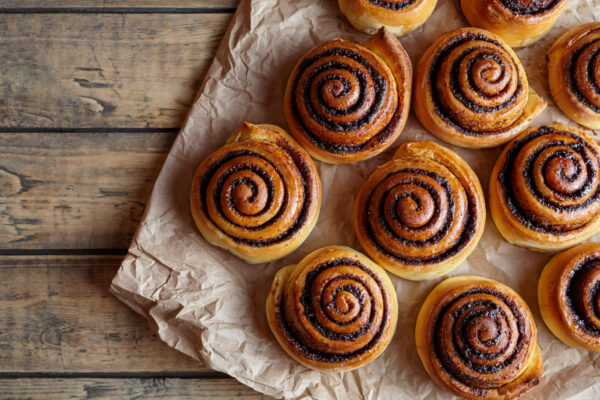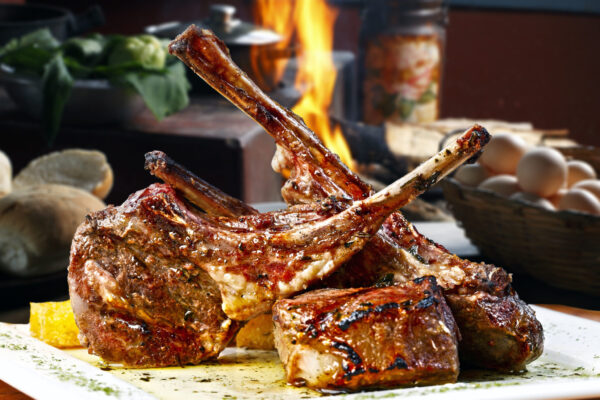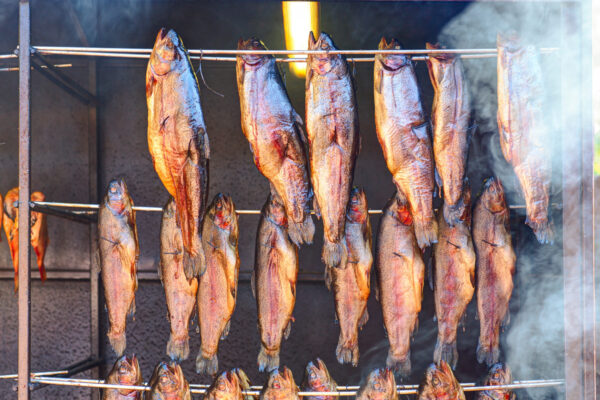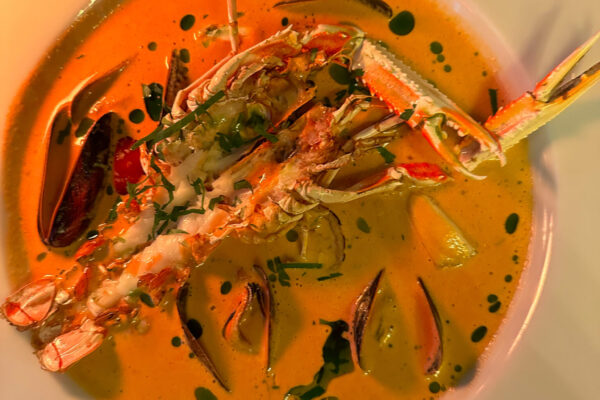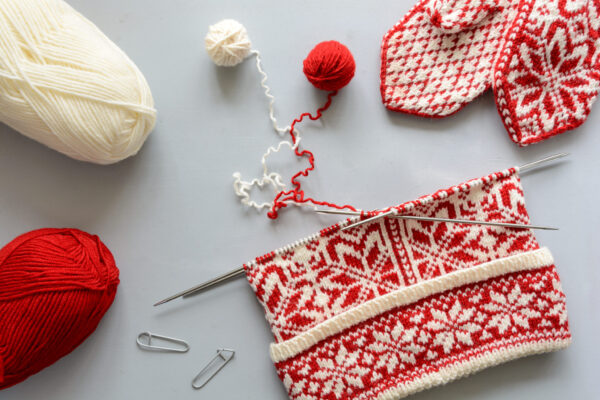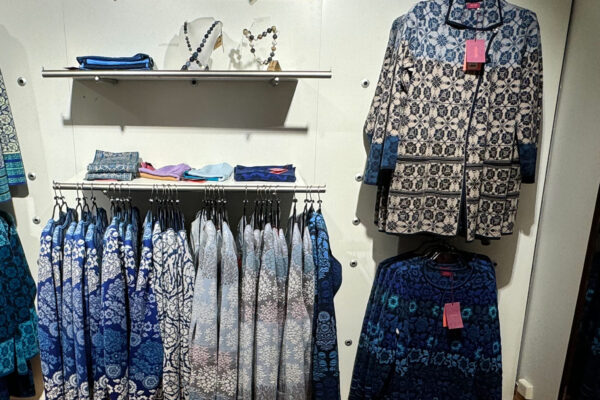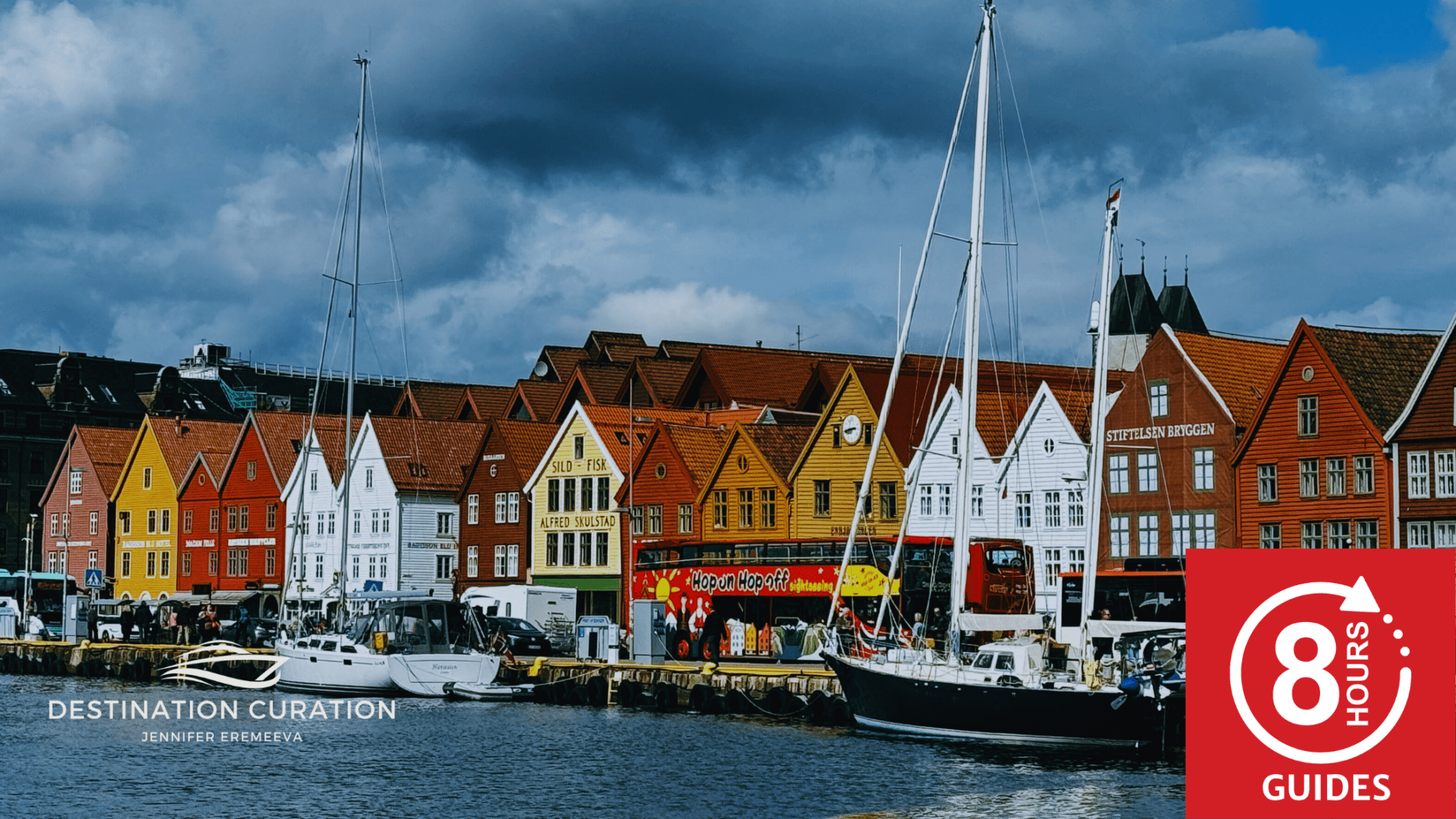
This post contains affiliate links, including links from the Amazon Associates programs. These links will direct you to products I recommend for further exploration and enjoyment of the topics I cover on my website and in my lectures. See more in the Privacy Policy below.
The History of Bergen, Norway
Bergen’s long history predates the Viking Age. A royal estate called Alrekstad was established at the foot of Mount Ulriken as early as the 400s. The estate expanded during the reign of Harald Fairhair in the 9th century, who made it one of his strongholds and laid the foundation for the city’s growth.
The city’s name itself underwent an interesting evolution. Originally called “Bjørgvin,” meaning “the meadow (or plains) among the mountains,” the name transformed. By the 14th century, it was known variously as “Bervin,” and “Berven,” before finally taking on the name, which stuck: “Bergen,” thanks to the large continent of German merchants in the city, who heard their own word “berg” or mountain in the city’s original name.
King Olav Kyrre, son of Harald Hardrada (who famously died at the Battle of Stamford Bridge just before the Norman Conquest of England), is traditionally credited as Bergen’s founder. He moved the royal estate to Holmen, the site of today’s Bergenhus Fortress, providing a strategic location to defend against maritime attacks. Bergen quickly rose to prominence as one of the most important cities in Norway during this period of the spread of Christianity and the consolidation of monarchical power in the country. Bergen’s strategic location on the western coast, with its deep, well-protected harbor, made the city an ideal spot for both military defense and thriving trade connections.
Bergen’s importance in the nascent Kingdom of Norway was cemented when the country held its first coronation in Bergen’s Christ Church cathedral in 1150. Sadly, this grand cathedral, along with its precious relics, was destroyed by the Danes in the 16th century.
The Hanseatic League
Bergen’s golden age of commerce began in the 12th and 13th centuries and continued throughout the Middle Ages with the flourishing stockfish (dried cod) trade. The city’s ideal location on the west coast of Norway between the rich fishing grounds of the Lofoten Islands to the north and the markets of England and Northern Europe made it a key trading hub.
This strategic importance led to Bergen becoming an important kontor for the Hanseatic League, a powerful medieval trading alliance led by the city of Lubeck. The League established the kontor (foreign trading post) at Bergen, which became one of the largest Hanseatic offices abroad.
The Hanseatic period left an indelible mark on Bergen. The iconic Bryggen district, now a UNESCO World Heritage Site, stands as a testament to this era, and you can still see the colorful coats of arms of other Hansa cities such as Lubeck, Bremen and Riga on the upper floors of some of the stone houses along the warf. The colorful wooden buildings along the old wharf or Bryggen neighborhood were once bustling with German merchants and their apprentices.
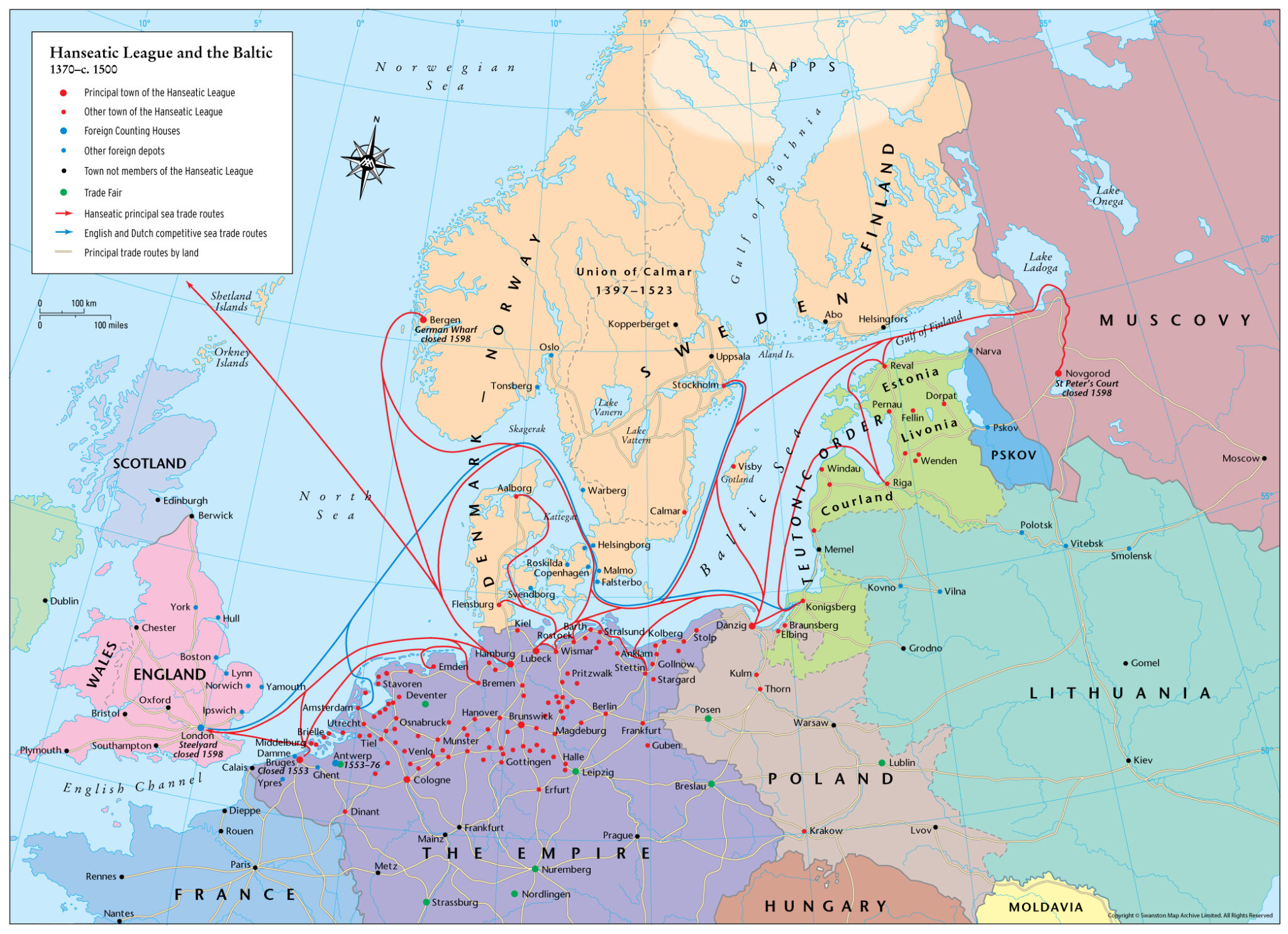
A Map of the Hanseatic League | Created by The Map Archive
The Hanseatic influence extended beyond trade, shaping Bergen’s language, leaving traces of Low German in the local dialect and contributing to the softer “r” sound characteristic of Bergen’s dialect. Even today, the local beer is called “Hansa,” a nod to this influential period.
Relations between the Hansa merchants and the locals of Bergen were not always cordial. Young apprentices from Germany, who were sent to Bergen to undergo training at 13, were forbidden to fraternize with the locals, and any Bergen local who strayed into the Bryggen in the evening risked a pummeling or worse. Fights often broke out between the Germans and the Norwegians. Despite these tensions, the Hansa presence helped Bergen grow and develop throughout the Medieval period.
Challenges and Resilience
Bergen faced numerous challenges that tested its resilience. The Black Death reached Bergen in 1349, devastating the population and temporarily truncating the city’s growth and prosperity. This plague, which ravaged much of Europe, had long-lasting effects on Norway’s demographics and economy.
Fire was another recurring threat. Bergen suffered over 35 major city fires throughout its history, occurring approximately every 40 years. These conflagrations repeatedly reshaped the city’s landscape as merchants rebuilt their wooden warehouses on the ashes of the old, gradually extending further into the harbor. This practice explains the precarious nature of some of Bryggen’s structures today, including the Hanseatic Museum, which is closed for extensive renovation.
The fires and their impact are very well documented in the excellent Bryggen Museum, which is well worth a visit to learn more about the extensive archeological finds unearthed in the Bryggen area, which centuries of ash and sand have preserved very well.
St. Mary’s Church, built of stone, survived these fires and stands as one of the few remaining medieval buildings in Bergen.
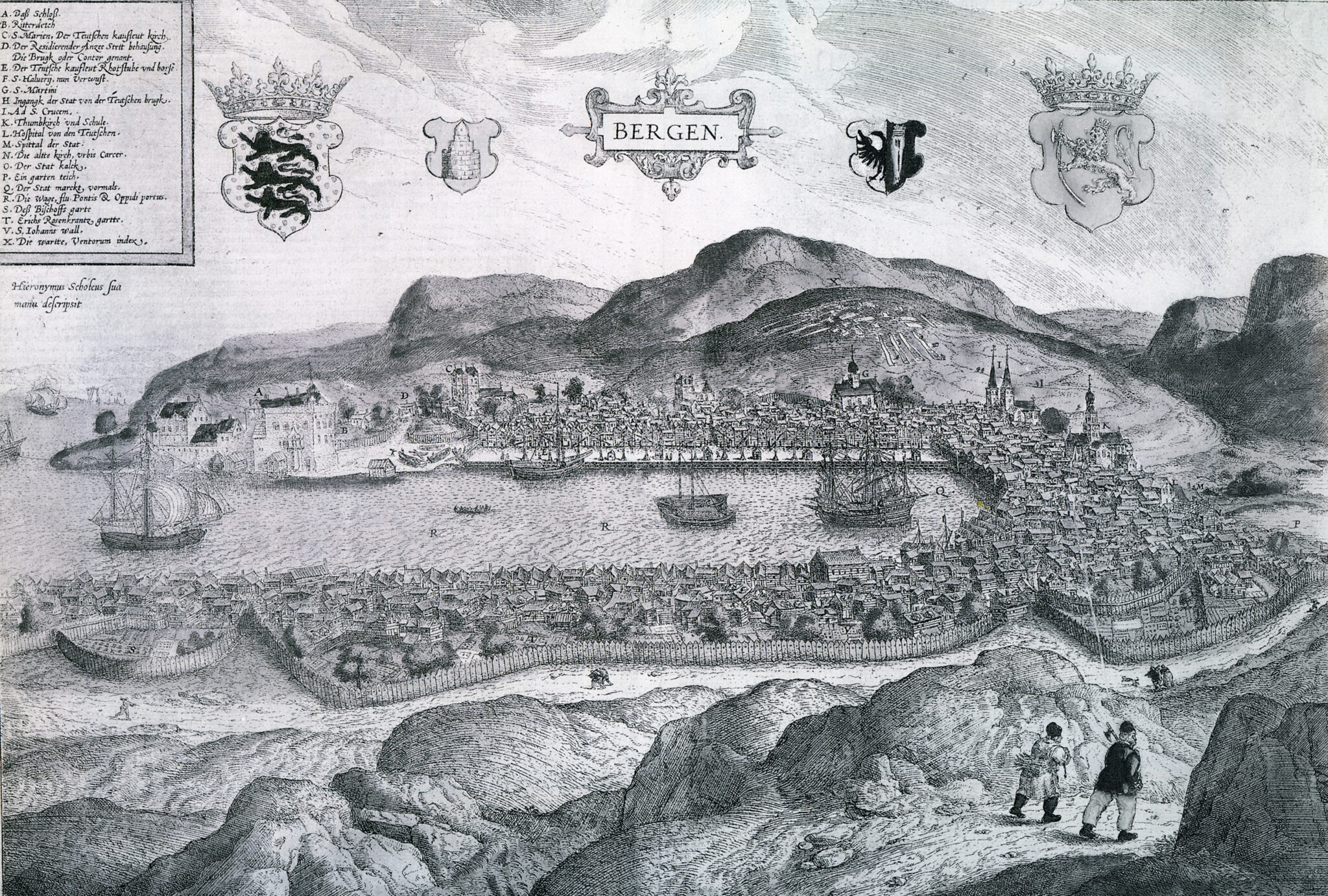
Hieronymus Scholeus’s impression of Bergen c. 1580 | Via Wikimedia Commons
Modern Era and World War II
The 19th century brought renewed prosperity and modernization to Bergen. This period saw the construction of many beautiful Art Nouveau buildings that still grace the city center, as well as the picturesque villas climbing the slopes of Mount Fløyen. The city expanded and modernized, solidifying its position as a key Norwegian city.
World War II brought new challenges to Bergen. The city was occupied by German forces on April 9, 1940, the first day of the invasion of Norway. Despite the occupation, Bergen became an important center for the Norwegian Resistance movement, known as Milorg. The resistance carried out numerous sabotage operations against the occupying forces.
The war years were challenging for Bergen. The city suffered from Allied bombing raids targeting German naval installations. One particularly devastating attack in 1944 destroyed hundreds of houses and damaged historic structures like the Rosenkrantz Tower and Håkonshallen. The explosion of the Dutch ship Voorbode, loaded with tons of ammunition, in the harbor caused extensive damage to the city.
Bergen Today: A Blend of History and Modernity
Today, Bergen stands as Norway’s second-largest city, home to about 260,000 people. It seamlessly blends its rich history with modern urban life. The city serves as the headquarters of the Norwegian Navy and is an important educational center, with the University of Bergen hosting around 16,000 students.
Bergen’s economy has diversified beyond its historical reliance on trade. While fishing and maritime industries remain important, the city has also become a center for aquaculture, offshore petroleum industry, sub-sea technology, and tourism.
Most famously, Bergen is known as the Gateway to the Fjords, welcoming visitors from around the world to explore the stunning natural beauty of Norway’s western coast. The city’s location, nestled between seven mountains and facing the sea, continues to shape its character and appeal.
Bergen’s vibrant cultural scene has inspired numerous festivals throughout the year, including the Bergen International Festival, one of Northern Europe’s largest cultural events.
Practical Information
Where is the Ship?
Bergen has two main cruise ship terminals:
Skolten Cruise Terminal is located in Central Bergen, near Bryggen. Ships docked here are within easy walking distance (5-7 minutes) to the city center and the chief attractions. This is the primary mooring for most luxury vessels.
Jekteviken Cruise Terminal is located south of the city center. Cruise companies often arrange shuttle buses to the center of the city.
Language:
Norwegians speak Norwegian and most of the people involved in tourism in Bergen speak excellent English.
Currency:
The currency of Norway is the Norwegian krona. Download My Currency Converter app to calculate the exchange rate with your currency.
Public Transport:
Most of Bergen’s historic center can be explored on foot, but the city’s efficient bus system is also an option, as are taxis, which are readily available throughout the city’s hotels.
The Hop-on-Hop-Off Bus:
The hop-on-hop-off bus tours throughout Bergen are well worth purchasing and enjoying as a nutshell tour of the city. It also helps to pull you out of the Bryggen neighborhood, where most tourists linger. There is much more to see in Bergen and this tour can help you discover it. Book your ticket in advance to avoid long lines on the day.
The Bergen Card:
If you plan to do more than one thing during your full day in Bergen consider a Bergen Card, which might save some money.
The Bergen Card is a city pass that offers visitors access to numerous attractions and benefits. The Bergen Card can be a cost-effective option for visitors planning to see multiple attractions and use public transportation frequently during their stay. Here’s what you need to know about the Bergen Card:
- What the Bergen Card covers:
- Free admission to many museums and attractions.
- Free travel on light rail and buses in Bergen and the surrounding regions.
- Discounts on various activities, restaurants, and shops.
- Free parking in municipal parking lots
- Duration options:
- 24-hour card
- 48-hour card
- 72-hour card
- 96-hour card
- Key attractions covered:
- Bergen Aquarium
- KODE Art Museums and Composer Homes
- Bergen Maritime Museum
- Fløibanen Funicular (50% discount)
- Ulriken Cable Car (20% discount)
- How to purchase:
- Online through the official Visit Bergen website
- At the Bergen Tourist Information Center
- Bergen Tourist Information Address: Strandkaien 3, 5013 Bergen
- Phone: +47 55 55 20 00
- Email: info@visitBergen.com
- Website: https://en.visitbergen.com/bergen-card
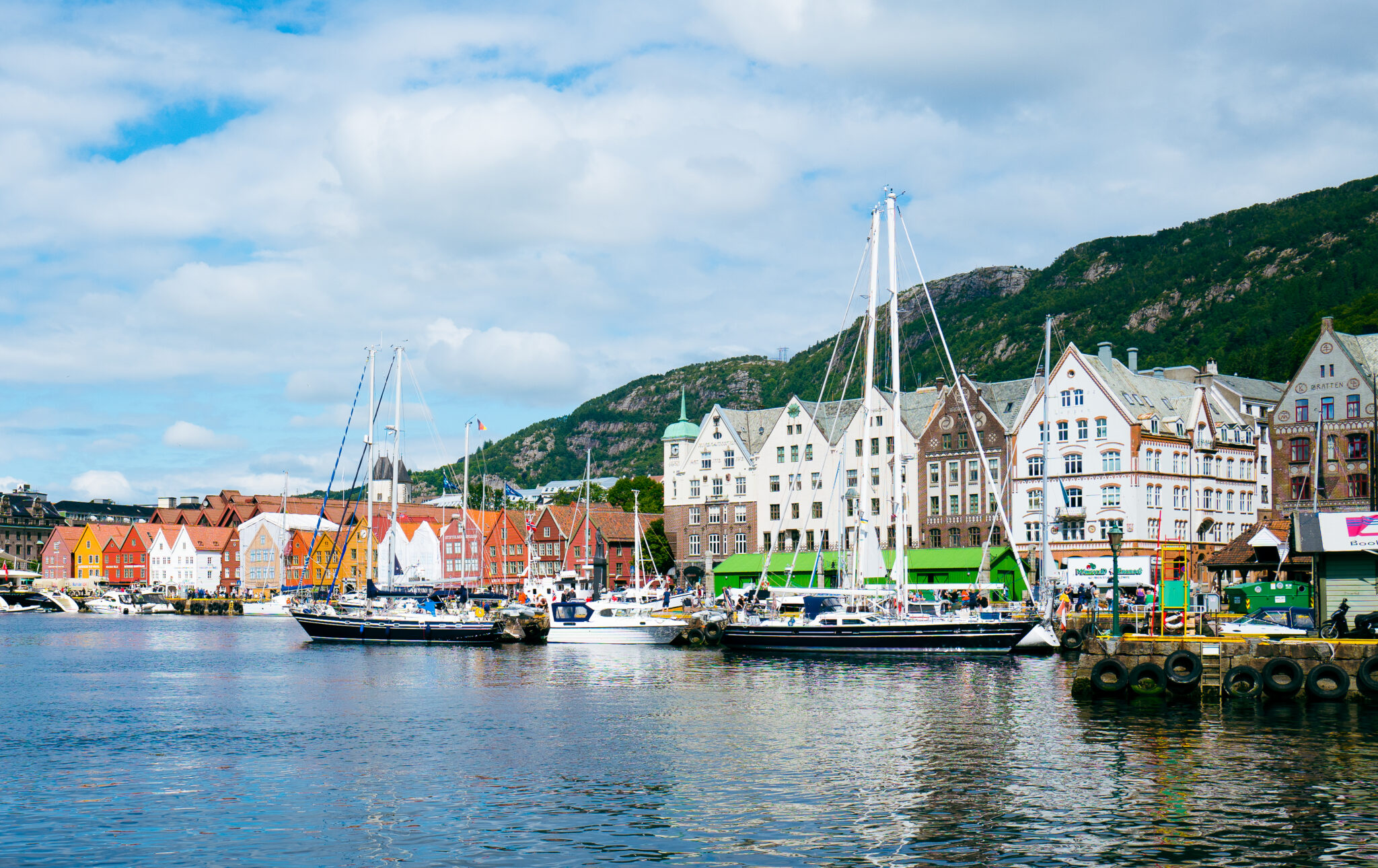
Photo Credit | Jennifer Eremeeva
The Top Things to Do in Bergen
Located in the heart of the fjords, Norway’s second-largest city, Bergen has so much to offer — it’s no wonder it has become one of the most popular places during the summer months in Northern Europe — both for cruise ships and land tours. The high season experiences lots of crowds and demand seems to grow each season. It is best, therefore, to plan and secure your arrangements well in advance, be they with your ship’s shore excursion department or your independent arrangements.
Explore the Bryggen Hanseatic Wharf
The colorful wooden houses, narrow alleyways, and cobblestone streets of the Bryggen Warf are a key part of the city’s rich Hanseatic history, and today this open-air museum is one of the main attractions of the city.
Begin with a visit to the Bryggen Museum, to learn more about the history of the district and the astonishing archeological finds discovered in its foundations. Check the museum’s website (https://bymuseet.no/museum/bryggens-museum) for the timings of the excellent free walking tour of the museum and the district, which brings the entire neighborhood alive.
Nearby St. Mary’s Church is one of the few medieval buildings to escape destruction in many fires that ravaged the city, and is well worth a visit.
The Hansa Assembly Rooms are reconstructions of this key Bryggen institution.
For a more immersive experience, consider booking a guided tour through the narrow streets of Bryggen.
The Fløibanen Funicular
One of the essential attractions of Bergen, and one of the more popular, the Fløibanen Funicular, enables you to see all of Bergen’s beauty spread out in front of you from a commanding height.
The funicular ride to Mount Fløyen takes just 5-8 minutes for a 320-meter climb to the top of the mountain where you can enjoy spectacular views of Bergen surrounded by majestic mountains and crystal clear fjords.
Don’t be surprised if you see numerous people taking advantage of severe hiking trails leading up to the peak of Mount Fløyen. If your fitness level permits, consider using these on the way down.
You can plan to include a luncheon or refreshment at the congenial mountain-top restaurant.
Note: the Fløibanen Funicular is one of the most popular attractions in Bergen. To avoid disappointment and delay, book your ticket or a tour, which includes guaranteed entrance in advance.
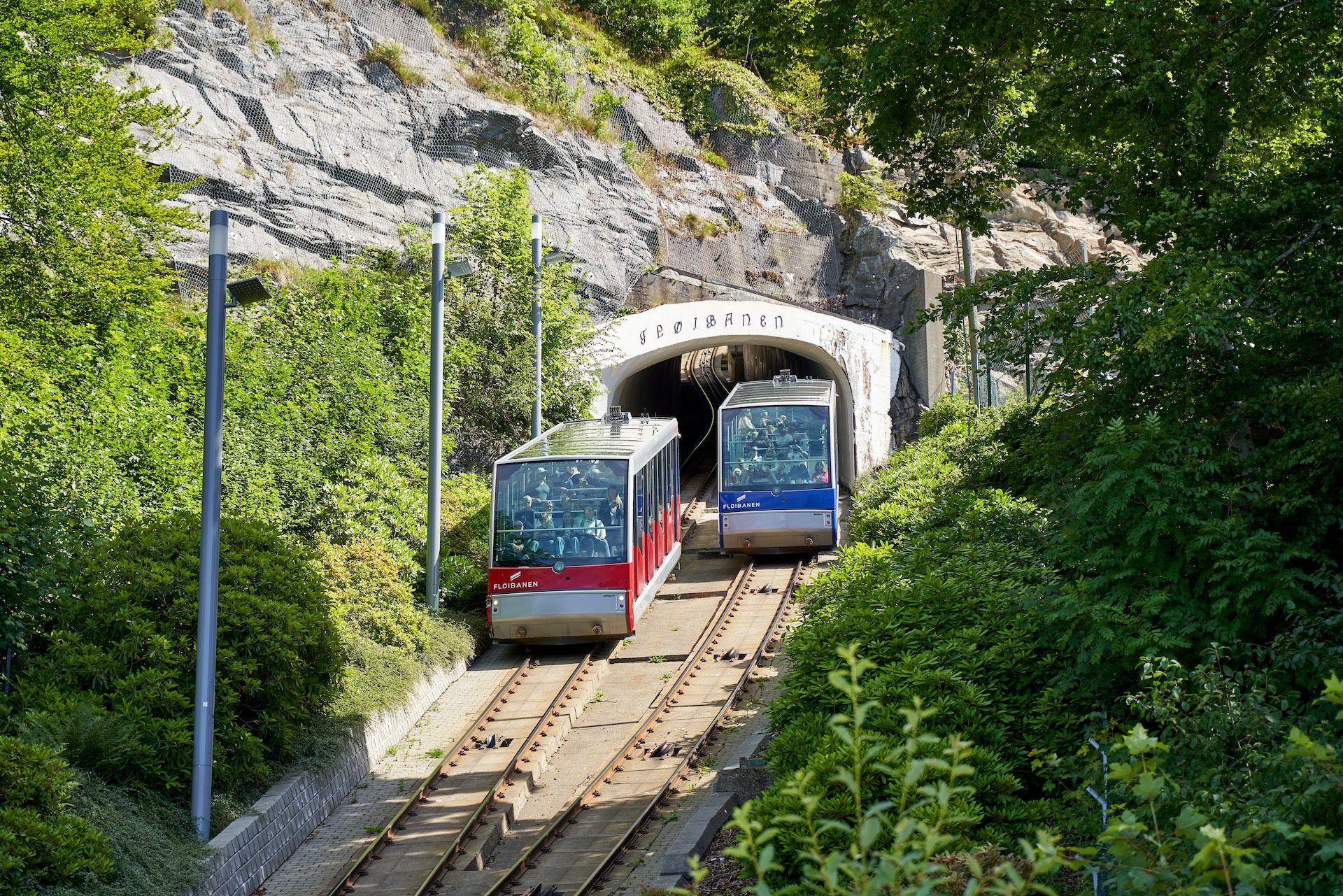
The Fløibanen Funicular | Photo credit: Wirestock Creators via Shutterstock
Explore the “Gateway to the Fjords”
Bergen is known as the “Gateway to the Fjords” because of its proximity to some of Norway’s most spectacular fjords. The city serves as an ideal starting point for exploring these majestic settings.
Sognefjord:
Often called the “King of the Fjords,” Sognefjord is Norway’s longest and deepest fjord, stretching over 200 kilometers inland from the coast north of Bergen. Once in the Sognefjord, you’ll enjoy breathtaking scenery with steep cliffs, waterfalls, and picturesque villages.
Hardangerfjord:
The second-longest fjord in Norway, Hardangerfjord, is known for its verdant foliage, including famous apple trees. It’s located southeast of Bergen and is famous for the Trolltunga (Troll’s Tongue) rock, which gets its name from the dramatic rock that juts out over the fjord. This is one of Norway’s most spectacular natural wonders, and a challenging and popular hiking trail, which is considered “very challenging” and should only be attempted by experienced hikers who enjoy a high level of fitness.
Nærøyfjord:
A branch of the larger Sognefjord, Nærøyfjord is a UNESCO World Heritage Site and one of the narrowest fjords in Europe, with steep mountains soaring to 1,800 meters on both sides.
Aurlandsfjord:
Another arm of Sognefjord, Aurlandsfjord, is known for its dramatic landscapes and the picturesque village of Flåm, which is the endpoint of the famous Flåm Railway.
Here are a few fjord tours to consider:
- Bergen to Sognefjord Private Round trip with Cruise and Flasmbana
- Bergen Beyond Tour
- Helicopter Over Trolltunga and Waterfall Sightseeing from Bergen
- Mostraumen Fjord and Waterfall Cruise
- Fjord Cruise to Sognefjord and Bøyabreen Glacier
- Fjord Hiking – Public tour
- Private guided day tour – RIB Sognefjord Safari and Flåm Railway
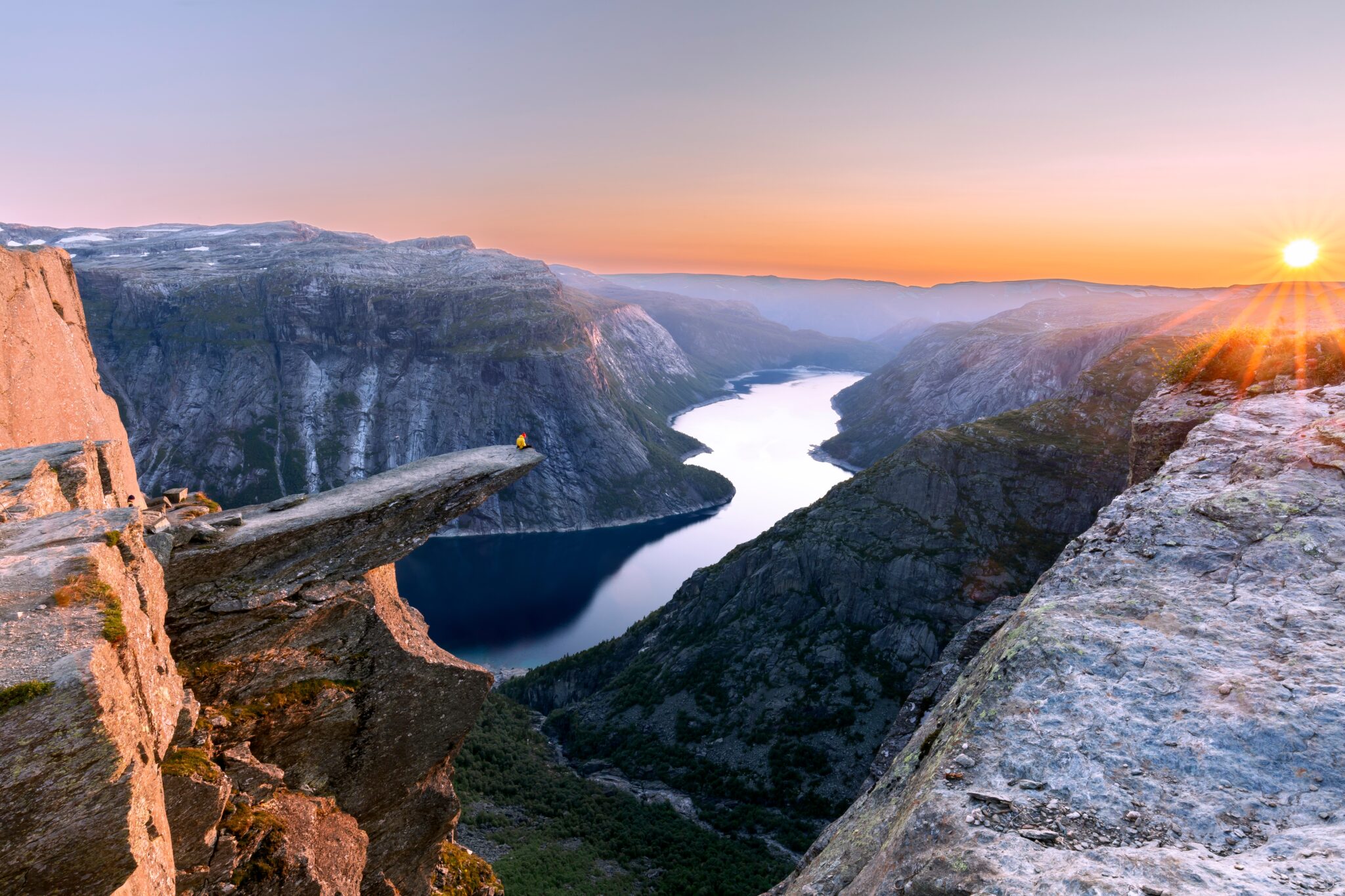
The Trolltunga Rock | Photocredit: xamnesiacx84.jpg via Shutterstock
Visit Fantoft Stave Church
The magnificent Fantoft Stave Church is one of Bergen’s older attractions. The original church was built in Fortun in 1150 and carefully moved to Fantoft in the late 19th century to help to preserve it. Tragically, however, it was destroyed in an arson attack in 1992. Since then, it has been meticulously restored.
Fantoft Stave Church is a reconstructed medieval church located just outside Bergen. Originally built in Fortun in Sogn in 1150, it was moved to Fantoft in 1883 to preserve it. Tragically, the church was destroyed by arson in 1992 but has since been meticulously rebuilt to its original specifications.
The church today provides one of the better examples of Norway’s unique traditional wooden architecture, with its intricate carvings and signature multi-tiered roof. While very much a Christian edifice, the dragon-head motifs throughout the church harken back to Norway’s pagan beliefs.
Fantoft is not in the city center, but easily accessible by Bergen light rail, taxi, or local bus. You can walk (about 2-3 hours), or book a tour, which includes Fantoft on its itinerary, like this one.
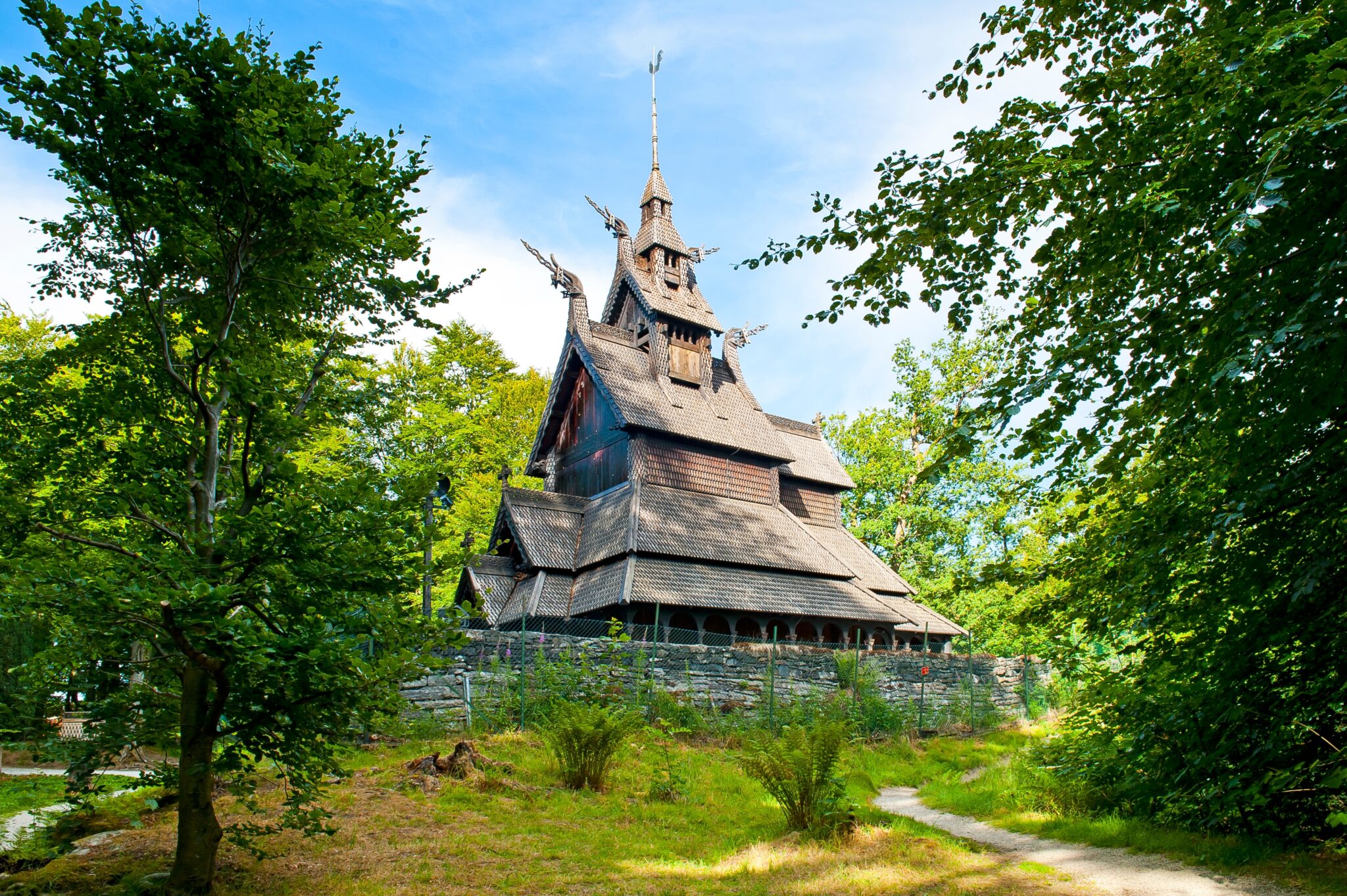
Fantoft Stave Church | Photo Credit Evikka via Shutterstock
More Bergen Attractions
If this is not your first visit to Bergen, or if your tastes incline to other things, consider these alternatives.
Ride the Ulriken Cable Car up Mount Ulriken
Sometimes confused with the Fløibanen Funicular The Ulriken Cable Car, also known as Ulriksbanen, offers a thrilling journey via cable car to the summit of Mount Ulriken, Bergen’s highest mountain. From a dizzying height of 643 meters above sea level, the Summit of Mount Ulriken offers unrivaled 360-degree vistas of Bergen and her environs.
Once at the top, enjoy the numerous hiking trails, which vary in levels from easy to challenging. Or schedule your visit to coincide with a luncheon or a snack at the Skyskraperen Restaurant, which offers magnificent views of the spectacular scenery and delicious food and drink.
Like the Fløibanen Funicular, the Ulriken Cable Car is wildly popular in Bergen so advanced bookings are a must to avoid disappointment. Click here to book your round-trip ticket on the Ulriken Cable Car.
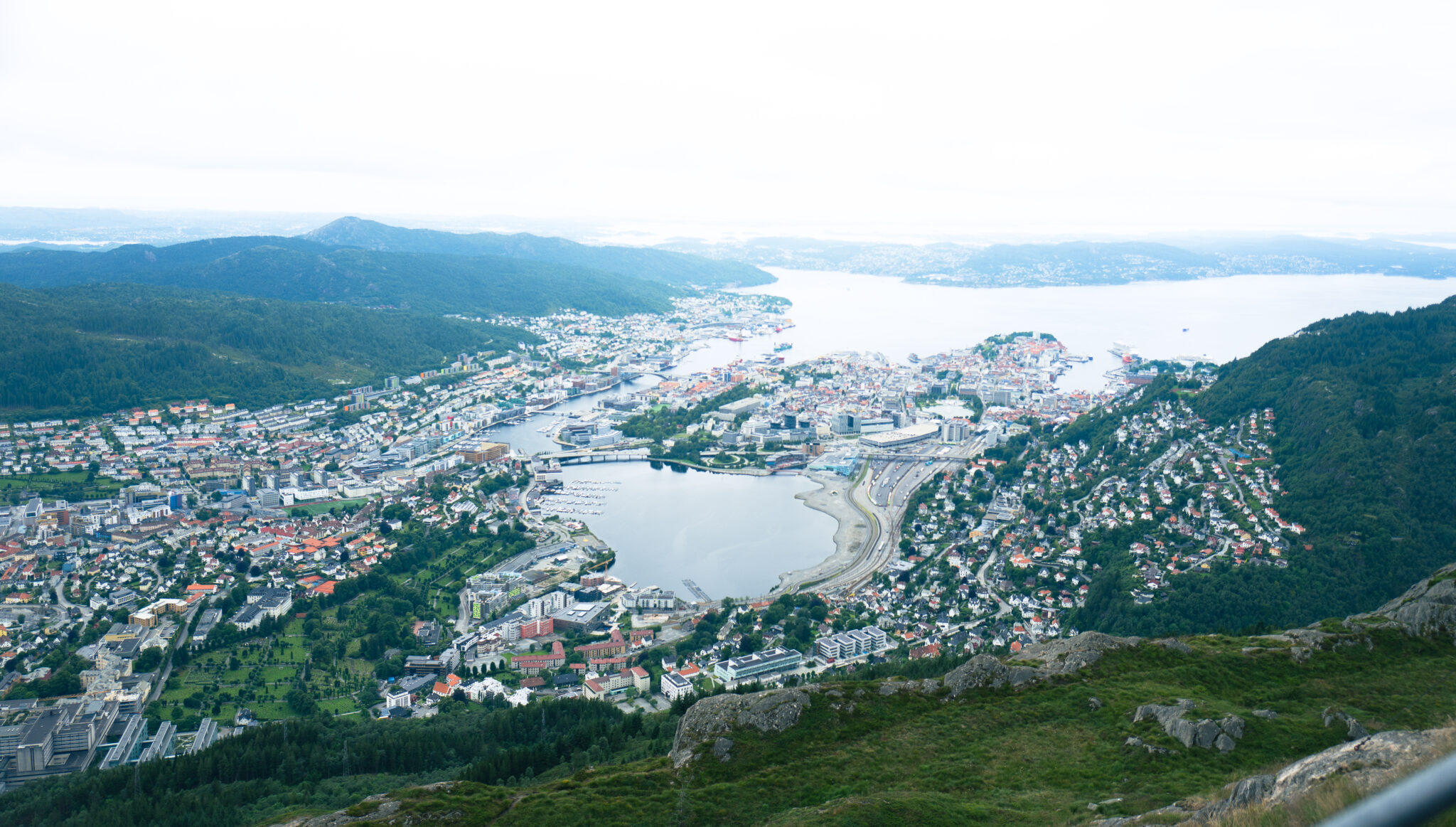
Spectacular views on Bergen’s main harbor from Mount Ulriken | Photo credit: Jennifer Eremeeva
Visit the KODE Art Museums and Composer Homes
The KODE Art Museums comprise four separate museums, each with its own focus and unique collections. Together they offer visitors access to an impressive collection of works by Edvard Munch, J.C Dahl, and other leading Norwegian and international artists. The museums also explore design, and the extraordinary lives of Norway’s leading composers, including Edvard Grieg. The KODE also provides space for temporary exhibitions.
KODE 1
- KODE 1 houses the museum’s collection of craft and design objects, including silver, furniture, and textiles.
- Address: Nordahl Bruns gate 9, 5014 Bergen
KODE 2:
- KODE 2 houses temporary exhibitions of contemporary and modern art.
- Address: Rasmus Meyers allé 3, 5015 Bergen
KODE 3:
- The Golden Age of Norwegian Art, including paintings by J.C. Dahl and other 19th-century artists is represented in KODE 3.
- Address: Rasmus Meyers allé 7, 5015 Bergen
KODE 4:
- KODE 4 houses the museum’s collection of modern art, including works by Edvard Munch.
- Address: Rasmus Meyers allé 9, 5015 Bergen
Find out more information about the KODE museums: https://kodebergen.no/en
Visit the Bergen Fish Market
Bergen’s Fish Market is a vibrant and historic marketplace in the city’s heart at the end of the harbor. Here, vendors sell an array of fresh fish, shellfish, and other local delicacies, including whale and reindeer. Several of the stands also offer prepared food made from their fresh ingredients: grilled fish, fish & chips, fish soup, fish kebabs, and other international dishes such as paella.
The Fish Market is very much the heart of Bergen, a modern iteration of Bergen’s strong commercial history. It is a great place to explore: perfect for foodies and photographers.
Make this a more immersive experience with these guided tours:
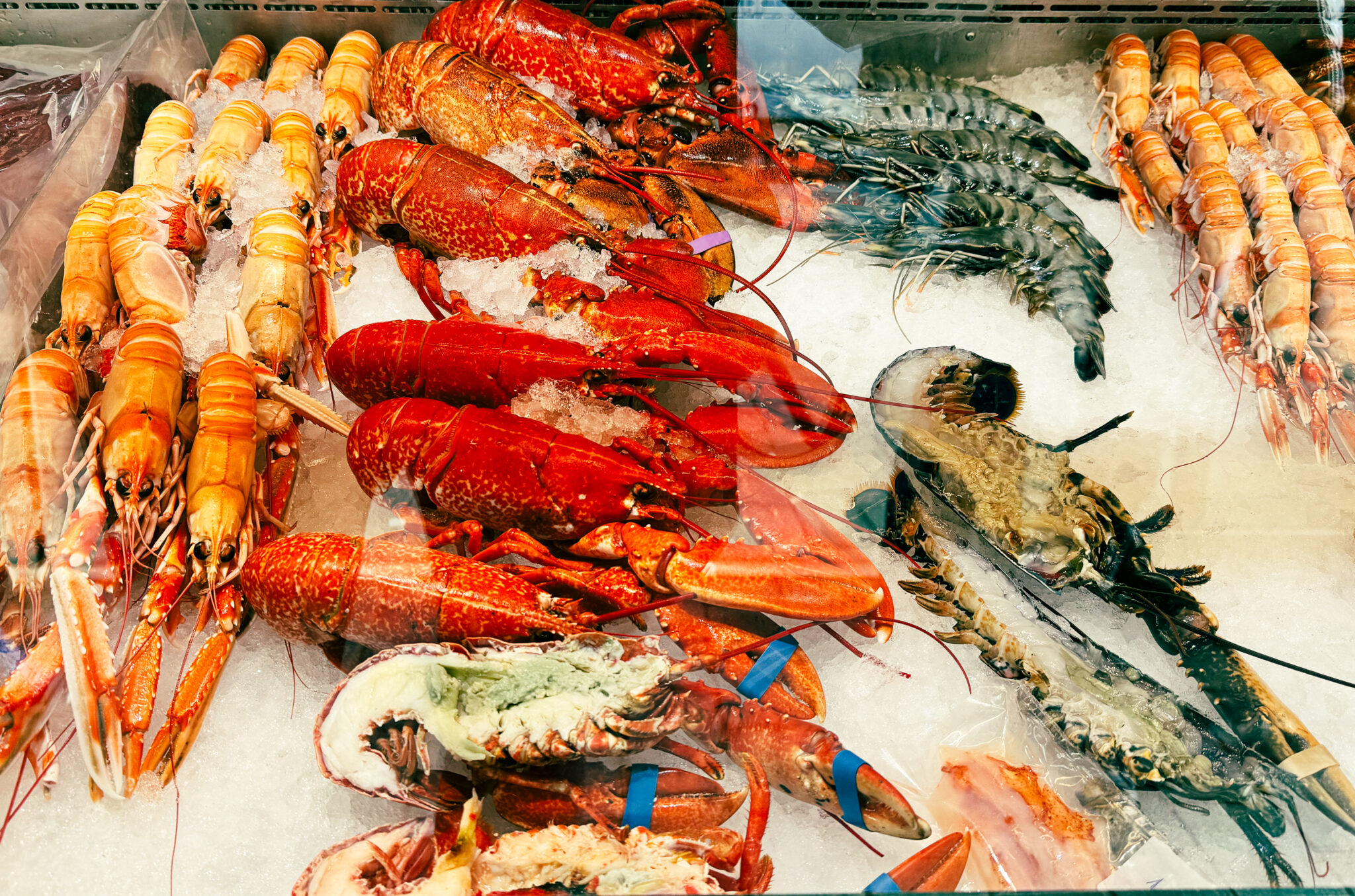
Fresh fish and shellfish at Bergen’s Legendary Fish Market | Photo credit: Jennifer Eremeeva
Visit the Bergenhus Fortress
The Bergenhus Fortress is one of the first sights you will encounter in Bergen as you exit the cruise terminal. It offers unique insight into Bergen’s medieval period and is a must see attraction for history enthusiasts.
Håkonshallen (Haakon’s Hall)
Håkonshallen is a 13th century royal residence, which remains the largest medieval secular edifice in Norway. This was originally built by King Håkon Håkonsson, and suffered terrible damage during World War II, but was beautifully restored.
Rosenkrantz Tower
This 16th-century tower combines medieval and Renaissance architecture. It served both as a residence and a fortified tower, offering panoramic views of Bergen from its top. Note that the Rosenkrantz tower’s spiral stairs are steep and narrow, with only a rope bannister. If mobility is an issue for you, consider carefully if this is the venue for you. This is not wheelchair accessible.
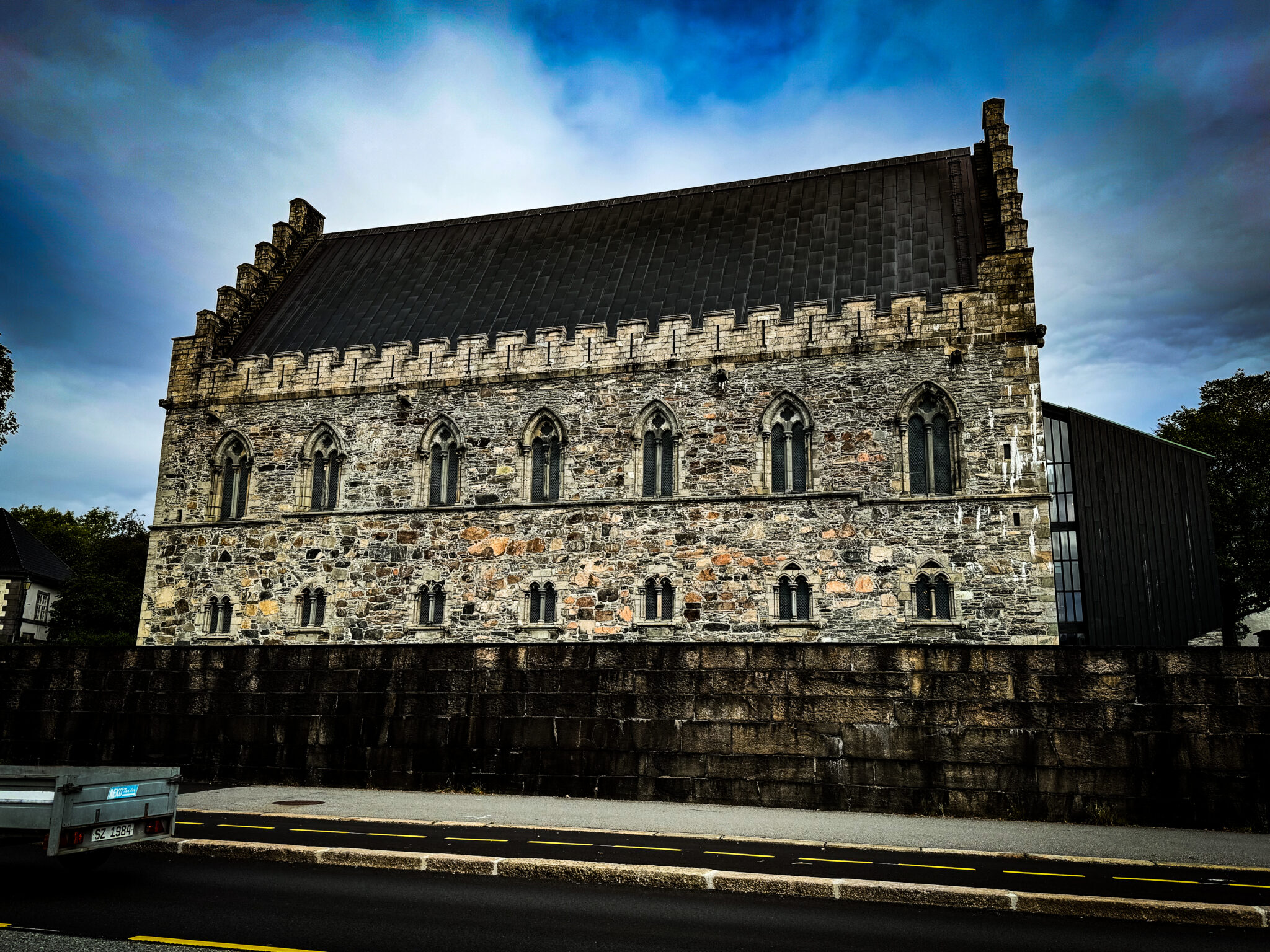
Håkonshallen | Photo credit: Jennifer Eremeeva
Active Exploration of Bergen
Bergen’s spectacular location nestled between the spectacular surrounding mountains and the magnificent fjords offers numerous options for active exploration.
Hiking:
Fishing
Biking:
- Bergen City Bike: Rent bikes to explore the city. Contact: Phone: +47 55 55 20 00, Website: https://bergenbysykkel.no/en
- Mt. Fløyen Mountain Bike Rental: Rent bikes at the top of Mount Fløyen. Contact: Phone: +47 55 33 68 00, Website: https://www.floyen.no/en
Kayaking:
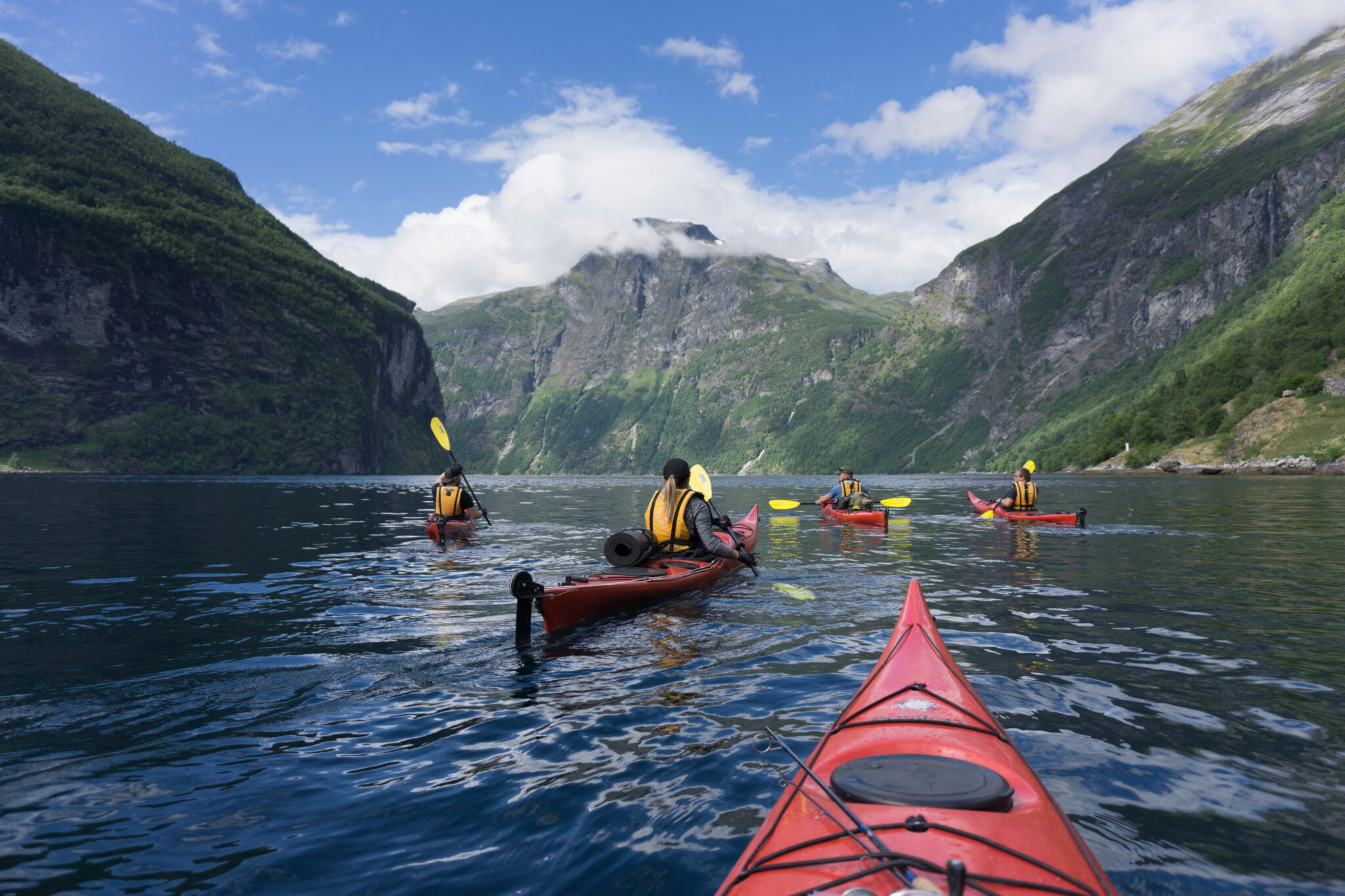
Kayaking in the Fjords | Photo Credit Sebw via Shutterstock
Quirky Facts and Intriguing Legends About Bergen
It’s Raining, It’s Pouring
Despite its history of devastating fires, Bergen is one of Europe’s rainiest cities, enjoying some kind of rainfall on 231 days per year. You’ve been warned!
The Leprosy Museum
In the 19th century, Bergen enjoyed the dubious distinction of having the most concentration of leprosy patients on the European continent. A legacy of this remains in Bergen’s Leprosy Museum.
Unsolved Mysteries
True crime enthusiasts know Bergen is the location of the Isdal Woman — one of Norway’s most notorious unsolved crimes, which inspired the NRK series Death in Ice Valley. The badly burnt woman found near Bergen in 1970 has never been identified and no suspect has been identified.
Bergen’s Vibrant Gastronomic Scene
There has never been a better time for gourmands to explore Norway! The country’s traditional hearty cuisine relies heavily on fresh, local ingredients, cooked simply. Modern chefs are putting new spins on these recipes, which have proved popular with visitors and locals alike!
While you are in Norway, be sure to sample some or these delectable local dishes:
Fiskesuppe (Fish Soup):
A creamy, hearty soup filled with various types of fish and seafood, often including salmon, cod, and/or shellfish with carrots, fennel, and lots of dill. I’m slightly obsessed with this dish and have enjoyed recreating it in my kitchen. A successful version of this relies on super fresh ingredients and very little fuss. It is soothing, delicious, and the ideal anti-freeze.
Kjøttkaker:
Norway’s meatballs are made with a mixture of beef and pork, in a creamy gravy, alongside boiled potatoes, and lingonberry jam. You will have no trouble finding this dish on any menu in Norway!
Rakfisk:
Rakfisk takes some getting used to but is much loved in Norway. This is fermented trout, which is served on flatbread and accompanied by sour cream and onions. Tart and savory!
Smalahove
Smalahove is not for the faint of heart made from sheep’s heads and enjoyed throughout Norway, but particularly in the West.
Bergen Fish Cakes:
Known locally as “fiskekaker,” these are a must-try when in Bergen. They’re made with white fish, often cod or haddock, mixed with milk, flour, and seasonings.
Brunost (Brown Cheese):
A sweet, caramel-like cheese made from whey. Once you know about Brunost, you understand why so many cheese planers are sold in souvenir shops! Brunost is served with waffles or on flatbread with butter. It is sold in the United States as “Ski Queen.”
Raspeballer:
These fluffy potato dumplings are also known as “kumle” or “kompe” in different regions. These are potato dumplings, which are a popular starch accompaniment to meat or salted fish.
Aquavit:
Norway and Scandinavia’s national spirit is a heady distilled spirit, which is flavored with caraway and or dill seed. Traditionally aquavit is consumed neat in a small shot glass, but innovative mixologists have made cocktails with it, including the fantastic Aquavit Sour.
Bergen-brygget øl (Bergen-brewed beer):
The craft beer scene in Bergen is thriving. Try local brews from breweries like 7 Fjell, Bergenhus Bryggeri, or Baklandet Bryggeri.
Tørrfisk (Dried Cod):
While more common in Northern Norway, you can still find this protein-rich snack in Bergen. It’s often served as a bar snack or appetizer.
Smørbrød
Scandinavia is famous for its open-faced sandwiches, known as “smørbrød.” These are constructed of a slice of the region’s dense rye bread, topped with delectable butter (“smør”) and then layered with an array of toppings, from cheese and ham to salted and smoked fish, mushrooms, liver pate, shellfish, and others.
Note: Smørbrød can be a trifle intimidating until you understand you should eat them with utensils, not with your hands as you might in North America. Cut off small bites and enjoy!
The Sweet Stuff
Norwegian Waffles (Vafler):
Do try these addictive heart-shaped waffles made with cardamom-spiced batter. You’ll find them thinner and softer than Belgian waffles, but equally enjoyable. Typical toppings are sour cream, fresh berries, jam, or brown cheese (brunost).
Norwegian Pancakes (Pannekaker):
Norwegians are crazy about their thin, crepe-like pancakes, which are often served rolled up with sugar, cinnamon, and butter. You might also encounter them stuffed with savory ingredients for a main course.
Krumkake:
Sample Norway’s beloved cone-shaped cookie made from flour, butter, eggs, sugar, and cream. These are often filled with whipped cream or lingonberry jam.
Skillingsbolle:
Scandinavians love their coffee and sweet pastries. Skillingsbolle — cinnamon rolls — is a Bergen institution, made with wheat flour, yeast, milk, sugar, butter, and cinnamon. Often topped with pearl sugar.
Multekrem:
A dessert made from fresh cloudberries (multe) and whipped cream.
Tilslørte bondepiker:
This is a popular layered dessert with applesauce, cinnamon-spiced breadcrumbs, and whipped cream.
Kvæfjordkake:
Known as “World’s Best Cake,” it’s a Bergen indulgence! Try the meringue-topped sponge cake with vanilla custard and whipped cream filling.
Trollkrem:
This simple dessert relies on the freshness of its ingredients: lingonberries or cranberries, egg whites, and sugar, whipped into a fluffy cream.
Svele:
A thick pancake similar to American pancakes, made with flour, sugar, eggs, and buttermilk. Often served with brown cheese or jam.
Gomme:
A sweet cheese made from colostrum (first milk from a cow after calving), regular milk, and sugar. Sometimes flavored with cinnamon.
Recommended Restaurants in Bergen
Cornelius Sjømatrestaurant:
- Seafood restaurant on a small island, accessible by boat. Known for its “meteorological menu” that changes daily.
- Phone: +47 56 33 48 80,
- Address: Holmen, 5041 Bergen
- Website: www.corneliusrestaurant.no
Bryggen Tracteursted:
- Traditional Norwegian cuisine in a charming, rustic setting in the historic Bryggen area.
- Phone: +47 55 33 69 99,
- Address: Bryggestredet 2, 5003 Bergen
- Website: www.bellevue-restauranter.no/bryggen-tracteursted
1877:
- Modern Nordic restaurant with an innovative tasting menu using local, seasonal ingredients. Phone: +47 92 87 18 77,
- Address: Vetrlidsallmenningen 2, 5014 Bergen
- Website: www.restaurant1877.no
Lysverket:
- A contemporary restaurant with creative Norwegian cuisine, located in KODE 4 art museum.
- Phone: +47 55 60 31 00,
- Address: Rasmus Meyers allé 9, 5015 Bergen
- Website: www.lysverket.no
Pingvinen:
- Casual pub-style restaurant serving hearty Norwegian comfort food, popular among locals and tourists.
- Phone: +47 55 60 46 46,
- Address: Vaskerelven 14, 5014 Bergen
- Website: www.pingvinen.no
Bare Restaurant:
- A Michelin-starred restaurant offering high-end dining with a focus on Western Norwegian ingredients.
- Phone: +47 55 32 55 40,
- Address: Torgallmenningen 2, 5014 Bergen
- Website: www.barerestaurant.no
Colonialen 44:
- A Modern European restaurant with French influence, known for its elegant atmosphere and innovative cuisine.
- Phone: +47 55 90 16 00,
- Address: Vetrlidsallmenningen 2, 5014 Bergen
- Website: www.colonialen.no
Le Petit Café:
- A charming French bistro offering classic French dishes in a cozy setting.
- Phone: +47 55 32 36 26,
- Address: Vaskerelven 12, 5014 Bergen
Bien Centro:
- Restaurant offering a mix of Mediterranean and French-inspired dishes.
- Phone: +47 40 00 12 42,
- Address: Olav Kyrres gate 39, 5014 Bergen
- Website: www.biencentro.no
Allmuen Bistro:
- Nordic bistro with French influences, focusing on local ingredients and traditional cooking methods.
- Phone: +47 55 60 06 10,
- Address: Strandgaten 81, 5004 Bergen
- Website: www.allmuenbistro.no
Brasserie Hansken:
- A French-inspired brasserie in the historic Bryggen area, offering a mix of French and Norwegian cuisine.
- Phone: +47 55 30 69 50,
- Address: Bryggen 29, 5003 Bergen
- Website: www.brasseriefrancais.no
Marg & Bein:
- Modern restaurant featuring French-inspired dishes alongside Nordic cuisine.
- Phone: +47 55 32 19 00,
- Address: Torget 9, 5014 Bergen
- Website: www.margogbein.no
Shopping
If shopping is on your agenda and you are traveling around Norway, saving your big buys for Bergen is a brilliant strategy. The area around Bryggen and the harbor has a high concentration of shops selling good and high quality Norwegian souvenirs, items for the home, traditional crafts, jewelry, and woolen items.
Bryggen:
Delve into the warren of shops housed in the former Hansa merchant warehouses. These sell Norwegian handicrafts, souvenirs, and local products. Address: Bryggen, 5003 Bergen.
Bergen Storsenter:
A large shopping mall in the city center with over 70 shops. Address: Strømgaten 8, 5015 Bergen Phone: +47 55 21 24 00 Website: www.bergenstorsenter.no.
Kløverhuset:
A shopping center known for its fashion boutiques and cafes. Address: Strandgaten 13-15, 5013 Bergen Phone: +47 55 30 80 00 Website: www.kloverhuset.no.
Husfliden Bergen:
Specializes in traditional Norwegian handicrafts and clothing. Address: Vågsallmenningen 3, 5014 Bergen Phone: +47 55 54 47 40 Website: www.husfliden.no.
Julhuset:
Visit Julhuset (Christmas House) for festive Norwegian holiday decor: ornaments for the tree, trolls, gnomes, Santas and other goodies. Address: Holmedalsgården 1, 5003 Bergen.
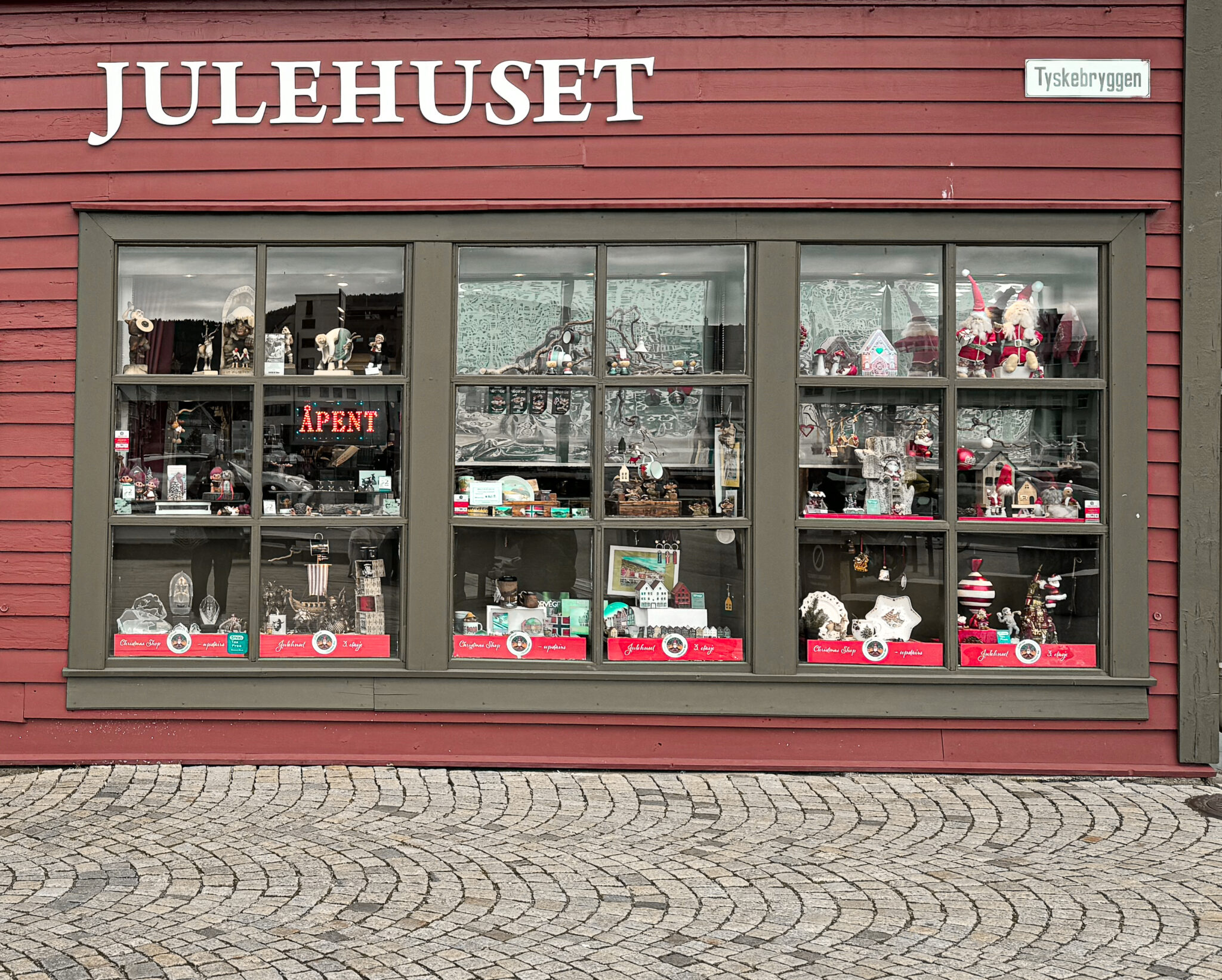
Sourcing Norwegian Sweaters
For those interested in purchasing authentic Norwegian sweaters, hats, scarves, and other woolen items, or the means to make one, Bergen offers several excellent options:
Dale of Norway:
Known for high-quality Norwegian knitwear. Address: Torgallmenningen 8, 5014 Bergen Phone: +47 55 55 94 00 Website: www.daleofnorway.com.
Husfliden Bergen:
Specializes in traditional Norwegian handicrafts, including sweaters. Address: Vågsallmenningen 3, 5014 Bergen Phone: +47 55 54 47 40 Website: www.husfliden.no.
Oleana:
This all-women collective is headquartered in Bergen and offers elegant and modern interpretations of traditional Norwegian knitwear. Address: Strandgaten 17, 5013 Bergen Phone: +47 55 32 91 01 | Website: www.oleana.no.
Norsk Flid Husfliden:
Another great option for traditional Norwegian sweaters. Address: Strandgaten 23, 5013 Bergen Phone: +47 55 32 22 07| Website: www.norskflid.no.
Notable Knitting stores in Bergen:
Husfliden Bergen:
Offers a wide selection of Norwegian yarn and knitting patterns. Address: Vågsallmenningen 3, 5014 Bergen Phone: +47 55 54 47 40 | Website: www.husfliden.no.
Strikkeboden:
A cozy shop with a variety of yarns and knitting accessories. Address: Vestre Torggate 5, 5015 Bergen Phone: +47 55 32 31 77 | Website: www.strikkeboden.no.
Garnkisten:
Specializes in high-quality yarns and knitting supplies. Address: Nygårdsgaten 31, 5015 Bergen Phone: +47 55 32 34 55 Website: www.garnkisten.no.
Rauma Garn Butikk Bergen:
Features Rauma yarns and traditional Norwegian patterns. Address: Strandgaten 207, 5004 Bergen Phone: +47 55 55 98 00| Website: www.raumagarn.no.
These stores not only offer a wide range of knitting supplies but also provide a glimpse into Norway’s rich knitting tradition, staffed by knowledgeable experts, who are delighted to share their expertise.

I hope you’ve enjoyed this 8-Hour Guide. I make every effort to ensure that all of the information provided is current and accurate. I encourage you to check restaurant and museum websites to ascertain opening times and other relevant information.
This is a continuing project. If you have a bucket list destination you’d like me to write about, use the contact button above to email me your needs! Thank you for your interest!
Enjoy other Articles Like this One!
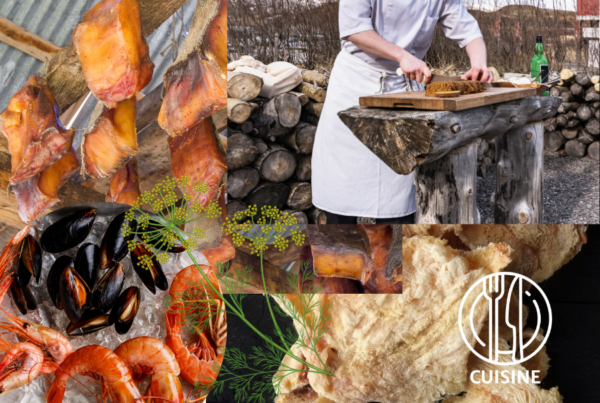 The Must-Try Things to Eat and Drink in Iceland
The Must-Try Things to Eat and Drink in Iceland
The Must-Try Things to Eat and Drink in Iceland
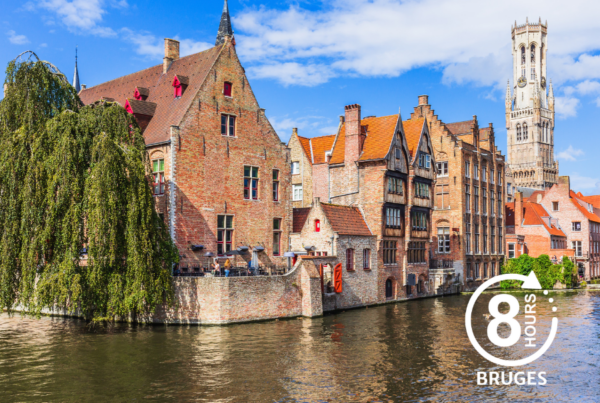 8-Hours in Bruges, Belgium: The Perfect Itinerary
8-Hours in Bruges, Belgium: The Perfect Itinerary
8-Hours in Bruges, Belgium: The Perfect Itinerary
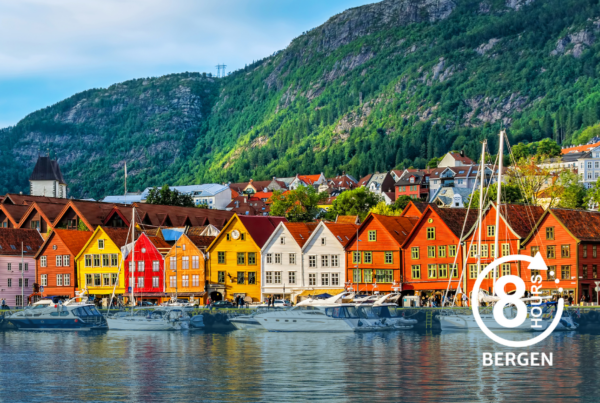 8 Hours in Bergen: A Guide to Norway’s Second City
8 Hours in Bergen: A Guide to Norway’s Second City
8 Hours in Bergen: A Guide to Norway’s Second City
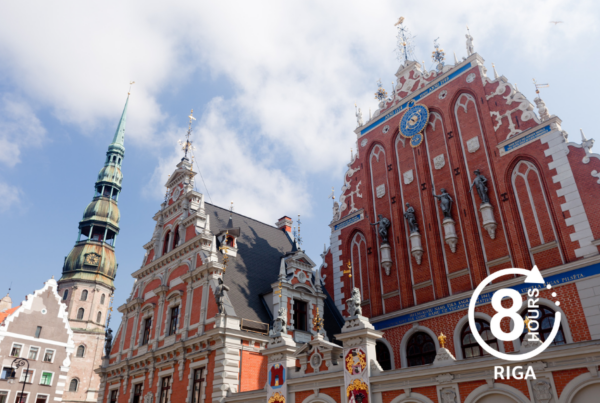 8 Hours in Captivating Riga, The Capital of Latvia
8 Hours in Captivating Riga, The Capital of Latvia
8 Hours in Captivating Riga, The Capital of Latvia
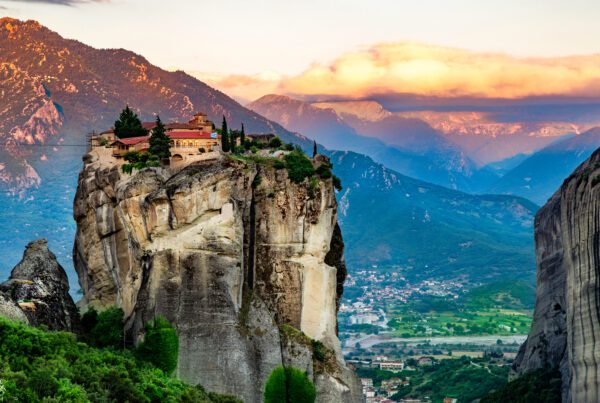 Day Trips from Athens: Meteora, Greece’s Hidden Gem
Day Trips from Athens: Meteora, Greece’s Hidden Gem
Day Trips from Athens: Meteora, Greece’s Hidden Gem
 My Top 10 Travel Planning Tools
My Top 10 Travel Planning Tools
My Top 10 Travel Planning Tools
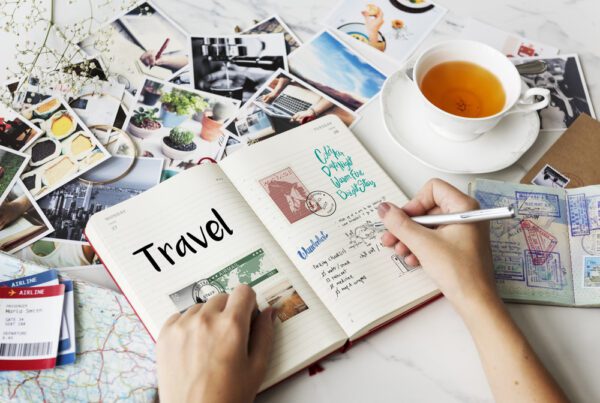 7 Steps to a Perfect Travel Bucket List
7 Steps to a Perfect Travel Bucket List
7 Steps to a Perfect Travel Bucket List
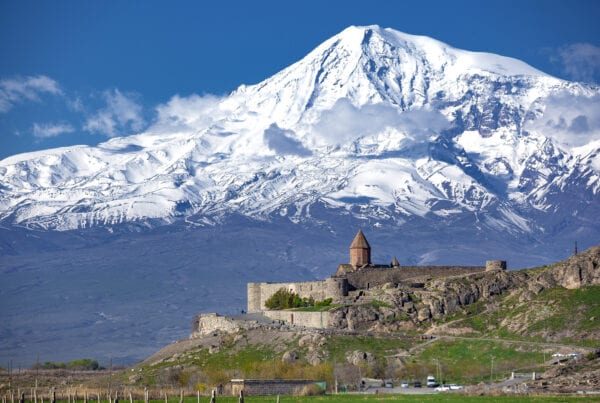 The Mysteries of Mount Ararat
The Mysteries of Mount Ararat
The Mysteries of Mount Ararat
 Budapest’s Iconic Parliament
Budapest’s Iconic Parliament
Budapest’s Iconic Parliament

